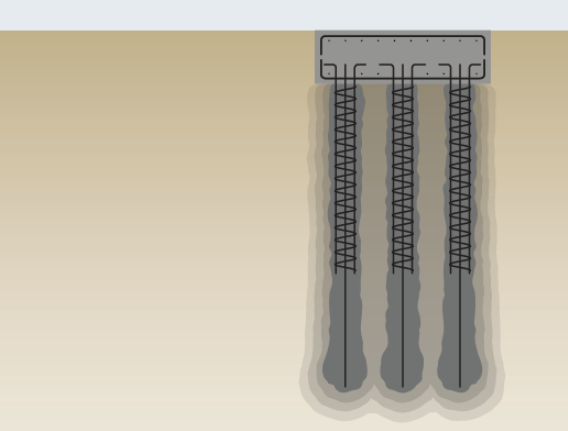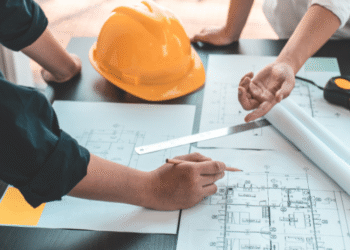Understanding soil-related uplift pressure for auger cast piles is essential for ensuring the structural integrity. These robust structures are designed for stability and strength, making them ideal for various projects from bridges to skyscrapers. But like any engineering marvel, they have their challenges, one of the most significant being soil-related uplift pressure. Understanding how this pressure interacts with auger cast piles is essential for ensuring safety and longevity in construction.
As we delve into this topic, you’ll discover the intricacies of uplift pressure and how it impacts design choices. Whether you’re an engineer or just curious about construction techniques, understanding these dynamics can make all the difference in project success. Let’s explore what makes auger cast piles so effective while keeping soil-related uplift pressure front and center!
Understanding Soil-Related Uplift Pressure
Soil-related uplift pressure is a critical factor in the design of auger cast piles. It refers to the vertical force exerted by soil on a pile, which can lead to potential failure if not adequately addressed. Understanding this phenomenon is vital for engineers and designers working with deep foundations.
Uplift pressures arise from several sources, including buoyancy effects in saturated soils and lateral earth pressures. When groundwater levels fluctuate, they can significantly influence these forces on the pile’s structure.
The nature of soil plays an essential role as well. Cohesive soils may exhibit different uplift characteristics compared to granular ones. As such, accurate site investigations are crucial for determining how much uplift pressure will act on each specific project.
By comprehending these dynamics, professionals can create more effective designs that enhance stability and ensure longevity in various conditions.
Factors Affecting Uplift Pressure on Auger Cast Piles
Several key factors influence soil-related uplift pressure on auger cast piles. Soil type plays a significant role, as cohesive soils exhibit different behaviors compared to granular ones. Cohesive soils can hold more weight and provide better resistance against uplift forces.
Depth of the pile is another crucial aspect. As depth increases, the surrounding soil’s confinement enhances stability, reducing potential uplift pressure.
Additionally, moisture content affects soil density and cohesion. Saturated conditions can weaken soil structure, leading to increased uplift risk.
Design parameters also matter. Pile diameter and embedment length directly impact how much load a pile can withstand before experiencing failure or displacement.
External loads from structures above contribute to overall stress distribution in the ground. Understanding these variables helps engineers design safer auger cast piles that can effectively handle potential uplift issues in various environments.
Methods for Calculating Uplift Pressure
Calculating uplift pressure for auger cast piles involves several methods, each tailored to specific soil conditions and project requirements. One common approach is the use of empirical equations derived from field tests. These formulas consider soil properties like cohesion and friction angle.
Another technique utilizes numerical modeling software. This method allows engineers to simulate various scenarios, providing a more dynamic understanding of uplift behavior under different loads.
Additionally, load testing can offer real-world insights into uplift pressures. By applying known forces to installed piles, practitioners can directly measure the response of both the pile and surrounding soil.
Understanding these methods paves the way for informed design decisions that enhance structural integrity against potential uplift forces. Each calculation method brings its unique advantages depending on site conditions and project specifications.
Design Considerations for Auger Cast Piles in High-Uplift Environments
Designing auger cast piles for high-uplift environments requires careful attention to various factors. The soil’s properties play a crucial role in determining the pile’s stability and performance. Engineers must analyze soil composition, density, and moisture content to predict how these elements interact with uplift forces.
Moreover, selecting the right reinforcement technique is essential. Using higher grades of steel or increasing wall thickness can enhance strength against upward pressure.
Load distribution also needs consideration; ensuring that loads are evenly spread across the pile reduces localized stress points. Additionally, incorporating proper drainage solutions helps mitigate water accumulation around the base, which can exacerbate uplift conditions.
Regular monitoring during and after installation allows for adjustments as necessary. Keeping an eye on environmental changes ensures that design adaptations align with real-world conditions throughout the lifecycle of the structure.
Implementation of Auger Cast Piles in High-Uplift Projects
One noteworthy case study involved the construction of a high-rise residential building in an area prone to significant soil uplift. Engineers opted for auger cast piles, effectively addressing the challenges posed by variable ground conditions.
By utilizing advanced techniques and materials, they achieved exceptional load-bearing capacity. The design team carefully analyzed soil profiles, ensuring that each pile was tailored to resist potential uplift forces.
Another impressive project included a bridge over soft marshy land where traditional foundation methods would have faltered. Auger cast piles provided stability without disturbing the surrounding environment significantly.
These successful implementations showcased not only engineering ingenuity but also cost-effective solutions in challenging scenarios. Each project demonstrated the versatility and reliability of auger cast piles when designed with soil-related uplift pressure considerations in mind.
Conclusion
Understanding soil-related uplift pressure for auger cast piles is essential for ensuring the structural integrity and longevity of foundations in various construction projects. As we’ve explored, these piles are invaluable in regions where uplift forces pose significant challenges.
The design considerations discussed are crucial when tackling high-uplift environments. Case studies illustrate that with proper planning and execution, auger cast piles can successfully mitigate the risks associated with uplift pressures.
Navigating the complexities of soil-related uplift pressure helps create safer, more reliable structures. Adopting innovative techniques and learning from past projects will pave the way for advancements in foundation engineering practices.
















